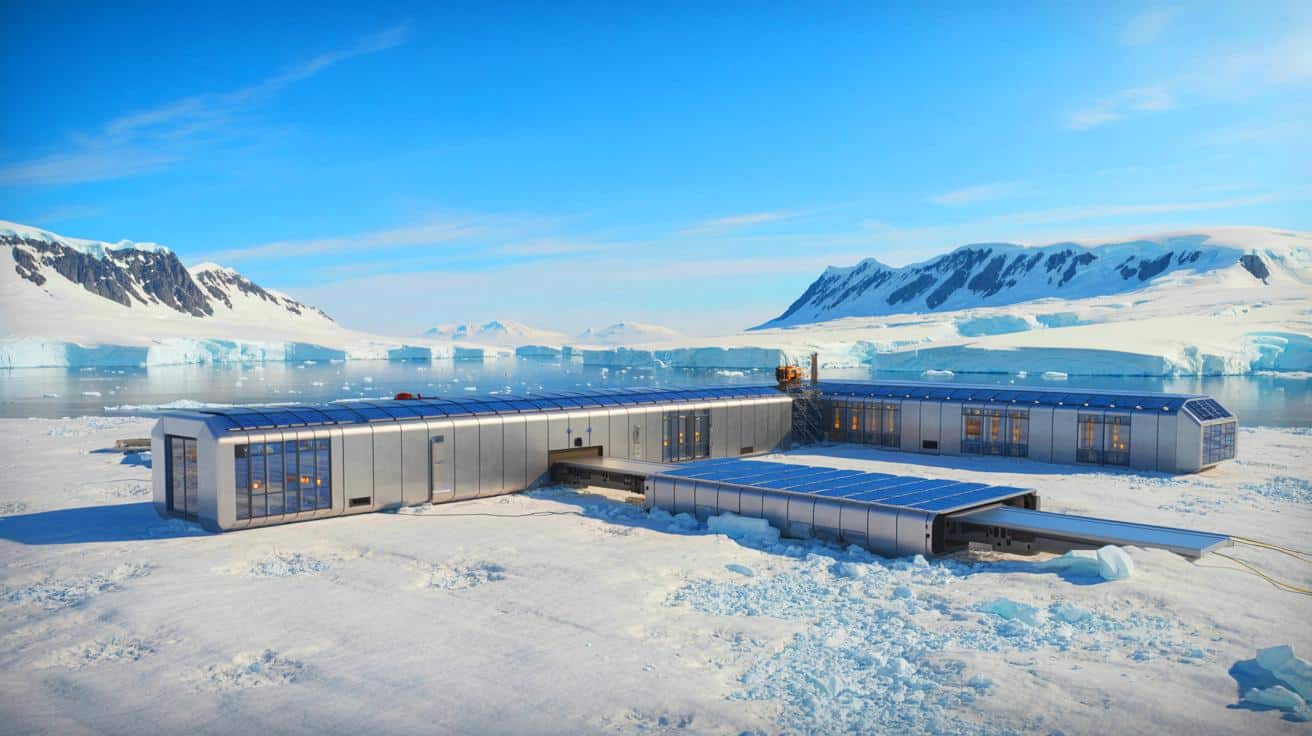IN A NUTSHELL
🏗️ Hugh Broughton Architects to upgrade Australia’s Davis Station with new infrastructure and facilities.
🌡️ The station faces extreme temperatures from 55°F in summer to -40°F in winter.
🔧 New modular building design aims to withstand harsh conditions and allow for future expansion.
💧 Installation of a reverse osmosis plant to produce safe drinking water from seawater.
In the realm of architectural innovation, few challenges are as formidable as designing structures that can endure the extreme conditions of Antarctica. The Davis Station, Australia’s most southerly research base, is set to receive a series of significant upgrades, thanks to the expertise of Hugh Broughton Architects. Known for their work on the Halley VI Antarctic research station, the UK-based firm is bringing its experience to the icy shores of the Ingrid Christensen Coast. This ambitious project not only aims to enhance the operational capabilities of the station but also to ensure the safety and comfort of the researchers who brave the harsh Antarctic environment.
Improving Infrastructure in Extreme Conditions
Located near the Vestfold Hills, Davis Station is often shielded from the harshest Antarctic conditions by its rocky terrain. However, the environment remains brutal, with temperatures swinging from a mild 55°F in summer to a bone-chilling -40°F in winter. The station endures long periods of darkness during the winter months, which adds to the operational challenges faced by the staff. The planned upgrades by Hugh Broughton Architects are designed to address these challenges head-on.
A major component of the upgrade is the construction of a large vehicle workshop and office building. This new structure will feature a modular design with an insulated, aerodynamic form to minimize snow accumulation and withstand high winds. The modular approach not only simplifies construction but also offers the potential for future expansion. Such foresight is crucial in an environment where logistical challenges can significantly impede development.
Technological Advancements to Boost Efficiency
The upgrades at Davis Station are not limited to physical structures alone. A new primary powerhouse will be added to the site, replacing outdated infrastructure and removing hazardous materials like asbestos. This modernization is essential for maintaining the station’s operational integrity in the harsh Antarctic climate.
The centerpiece of the project will be a new utility building containing a vehicle workshop, the main powerhouse, trades workshops, engineering offices, stores, and associated plant.
https://www.sustainability-times.com/cities/this-is-a-death-trap-for-rich-tourists-viral-thai-resort-pool-sparks-furious-debate-over-safety-and-luxury-excess/
In addition to the powerhouse, a reverse osmosis plant will be installed to convert seawater into safe drinking water. This advancement is expected to significantly increase the number of scientists who can be accommodated at the base, thereby expanding the scope of research conducted in the region.
Environmental Considerations and Sustainability
Operating in Antarctica requires a delicate balance between advancing scientific research and preserving the pristine environment. The upgrades at Davis Station reflect this ethos, with sustainability at the forefront of the design process. The modular construction approach reduces waste and allows for easier maintenance, which is critical in such a remote location.
Moreover, replacing old infrastructure and removing asbestos not only improves safety but also reduces the environmental footprint of the station. The integration of the latest technologies in water production and energy efficiency further underscores the commitment to sustainable practices. These efforts ensure that Davis Station can continue its vital research while minimizing its impact on the fragile Antarctic ecosystem.
Project Timeline and Economic Impact
Construction at Davis Station is slated to begin in late 2026, with a projected completion date in mid-2032. The estimated budget for this ambitious project stands at approximately $162 million. This investment underscores the importance placed on Antarctic research and the critical role the station plays in global scientific endeavors.
While the economic impact of such a project is significant, the benefits extend far beyond immediate financial considerations. The upgrades are expected to enhance the station’s research capabilities, contributing valuable data to the global scientific community. As the world grapples with climate change, the insights gained from Antarctic research are more crucial than ever.
The planned upgrades at Davis Station represent a significant step forward in Antarctic research infrastructure. By combining innovative design with cutting-edge technology, Hugh Broughton Architects is setting a new standard for sustainability and efficiency in extreme environments. As the project progresses, it raises an intriguing question: how can this model of innovation and sustainability be applied to other challenging environments around the world?
This article is based on verified sources and supported by editorial technologies.
Did you like it? 4.7/5 (22)

